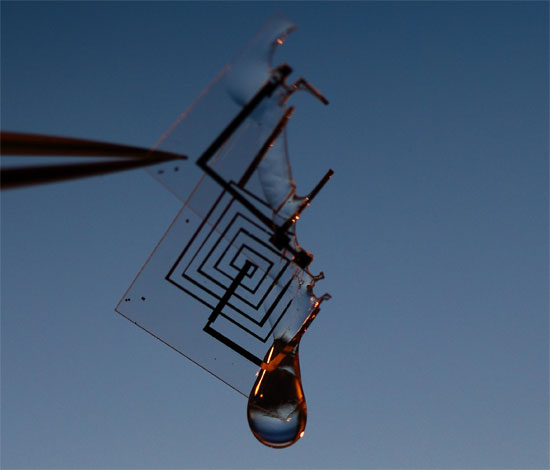
If you are familiar with our site, you know full well that we are big fans of the U.S.’ Defense Advanced Research Projects Agency (DARPA) and the things they do to push boundaries in the fields of science and technology (TQ was on it). Their latest creation, announced late last week is an absolutely incredible concept that holds vast potential in various fields.
The aforementioned project involves the creation of electronic systems that dissolve in liquid including the fluid found within the human body. The actual ‘melting’ that would occur can be set to an allotted time, allowing the electronics to be used until they are no longer needed and then simply dissolve as if they never existed.
The DARPA sponsored research project is the work of brilliant minds at Tufts University as well as the University of Illinois’ Beckman Institute. The actual electronic systems are fashioned from silicon and magnesium encased in a thin layer of silk. Various factors relating to the silk including thickness and crystallinity determine how long a specific system can last in liquid before breaking down. Silicon and magnesium are both found within the human body, leading DARPA to declare that the biodegradable electronics are safe for human use.
In terms of potential medical functions, the bio-compatible electronics could have a myriad of uses including use as a non-antibiotic programmable bactericide for surgical procedures, particularly those more prone to infection. According to a paper published in last month’s issue of Science, DARPA program manager had this to say about the systems’ use in surgery:
“Applying thin film appliqués to implant devices for localized surface heating and sterilization may help counter these infections, even when antibiotic resistant bacteria are present. Having means of eradicating infections could enhance the efficacy of many implant devices and ultimately reduce patient morbidity and mortality.”
Similar systems could also eventually replace less eco-friendly systems found in mobile devices and computers, creating less e-waste by simply dissolving. Check out the video below depicting the melting electronics.